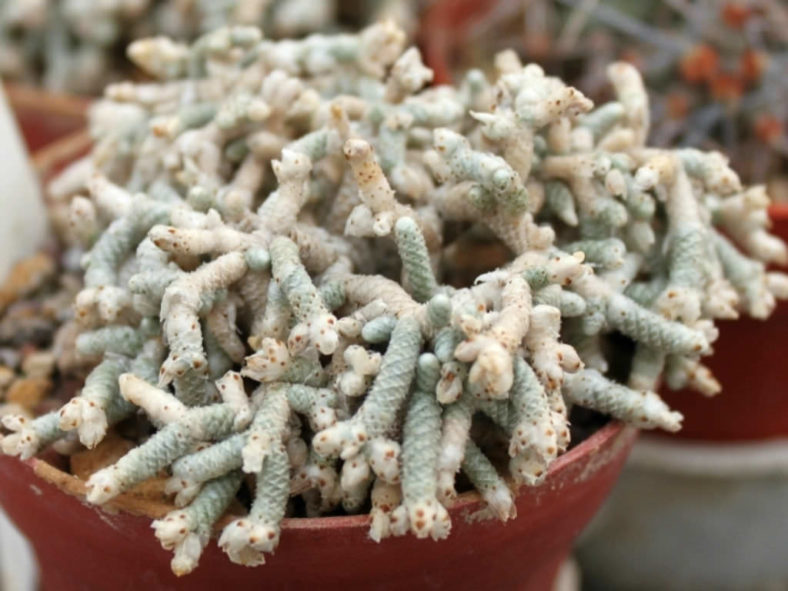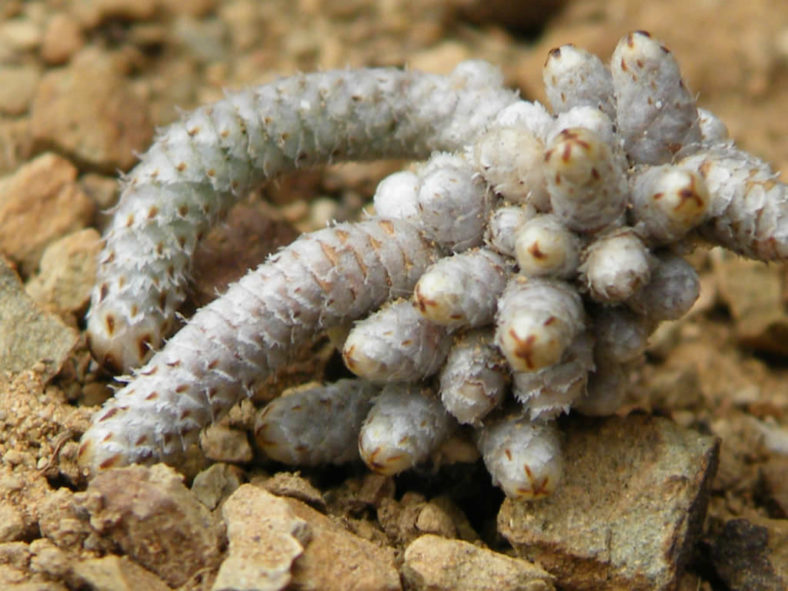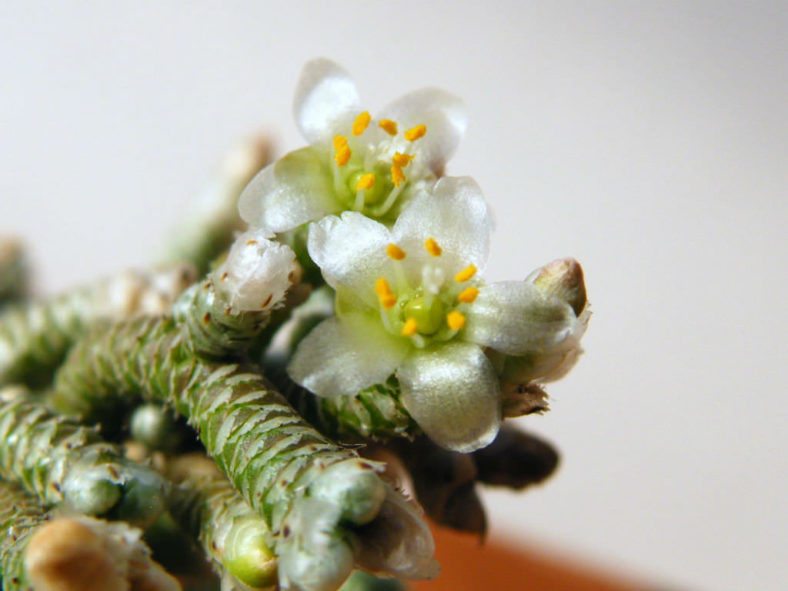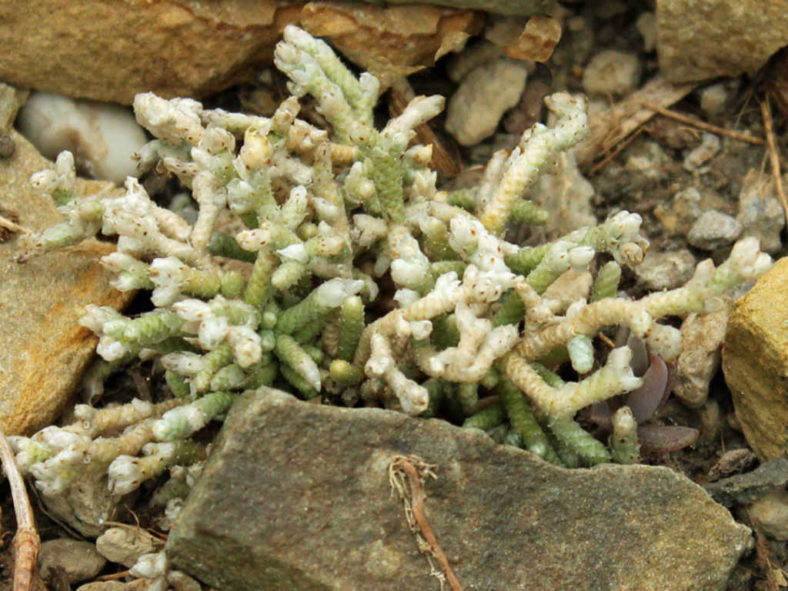Scientific Name
Avonia ustulata (E.Mey. ex Fenzl) G.D.Rowley
Synonym(s)
Anacampseros ustulata
Scientific Classification
Family: Anacampserotaceae
Genus: Avonia
Description
Avonia ustulata, also known as Anacampseros ustulata, is a small succulent shrub with tufted, worm-like, silvery-grey branches emerging from a small, partially underground caudex. The primary branches can grow up to 1 inch (2.5 cm) long and are densely covered with papery, silvery-grey, closely imbricated scales. The bud-like sterile stems are spherical, ovoid, or cylindrical and measure up to 0.16 inches (0.4 cm) long. The fertile stems can grow up to 0.5 inches (1.2 cm) long, sometimes with one or a few similar branches. The true leaves are tiny and hidden by the papery scales.
During the summer, the plant produces small, pale cream terminal flowers. The flowers only open in hot weather briefly in the afternoon.

Hardiness
USDA hardiness zones 10a to 11b: from 30 °F (−1.1 °C) to 50 °F (+10 °C).
How to Grow and Care
Although regarded as a choice and difficult plant, it is relatively easy to grow. Avonias grow very slowly and require careful cultivation. However, if grown correctly, clustering in cultivation will reward the grower with great displays of tiny flowers. These plants grow well at moderate to cooler temperatures in partial sun. Bright light enhances leaf colors and makes for a compact plant. Avonias enjoy gritty, free-draining soil with added organic material and low to moderate watering, depending on the species.
The seeds germinate quickly at temperatures between 59 and 70 °F (15 and 21 °C). In cultivation, the young plants develop much quicker than in their natural surroundings, where they do not get an ample water supply. Generally, they are not easy to raise from seed as too much water kills them immediately, which also happens when they are not watered at all.
Learn more at How to Grow and Care for Avonia.
Origin
Avonia ustulata is native to South Africa.
Links
- Back to genus Avonia
- Succupedia: Browse succulents by Scientific Name, Common Name, Genus, Family, USDA Hardiness Zone, Origin, or cacti by Genus
Photo Gallery
Click on a photo to see a larger version.



